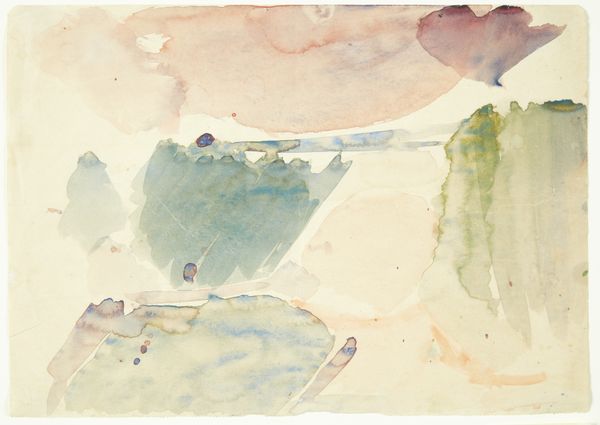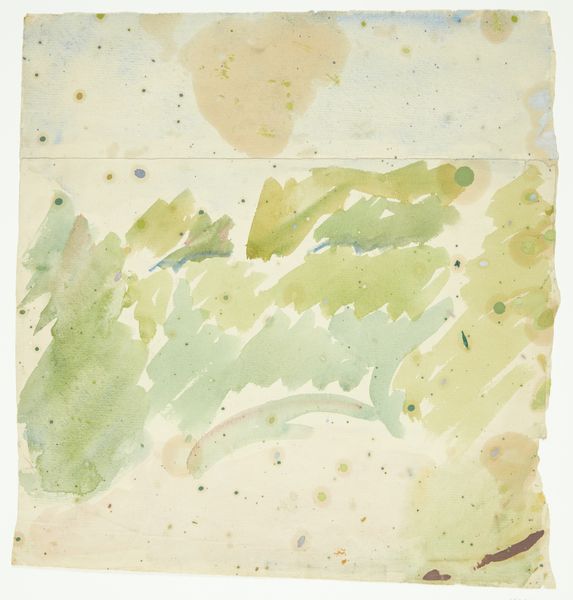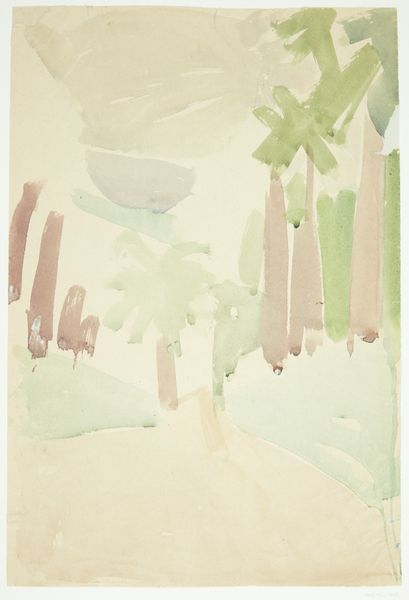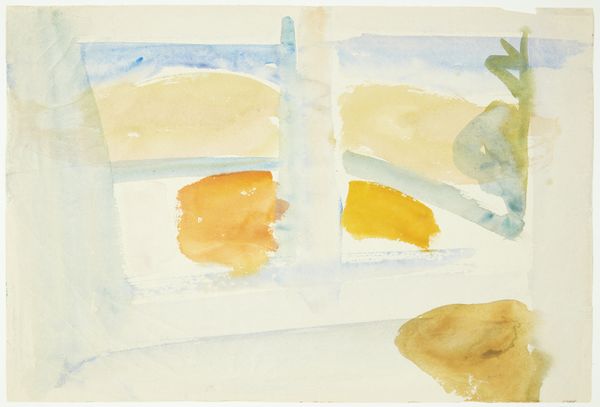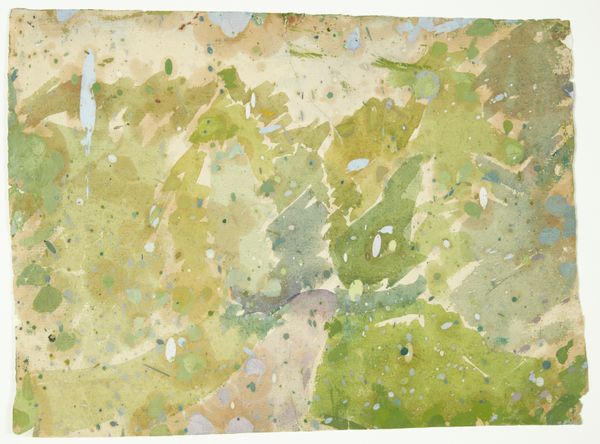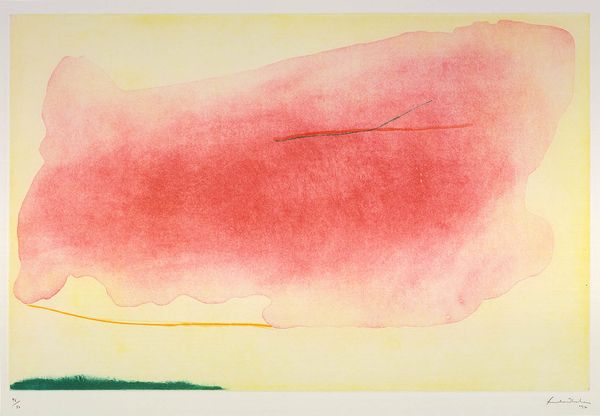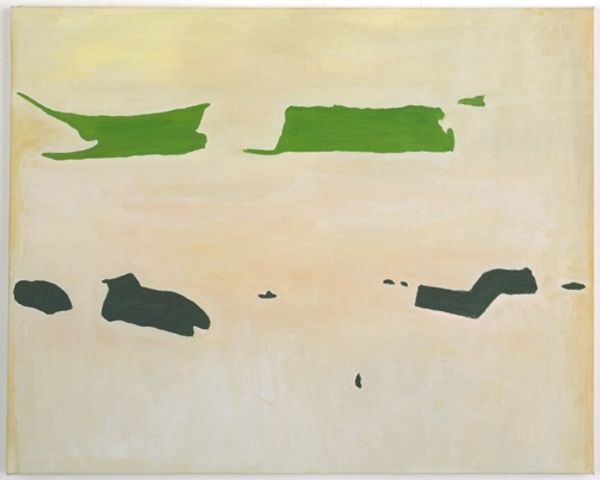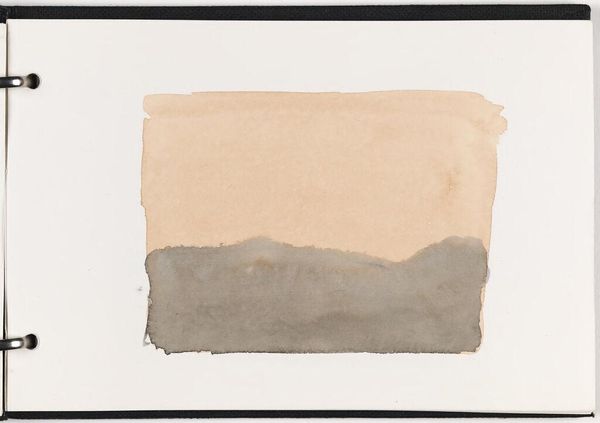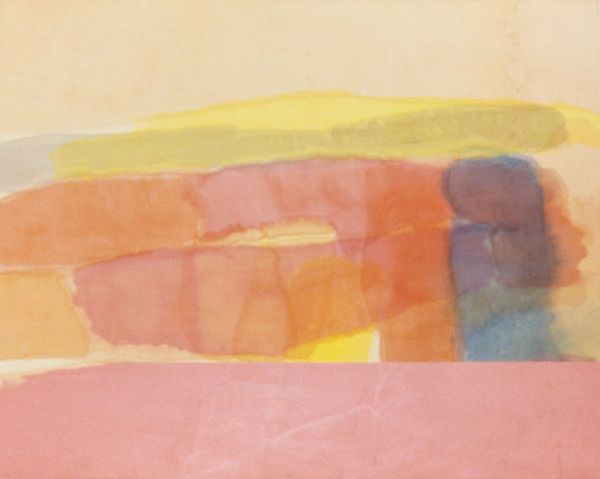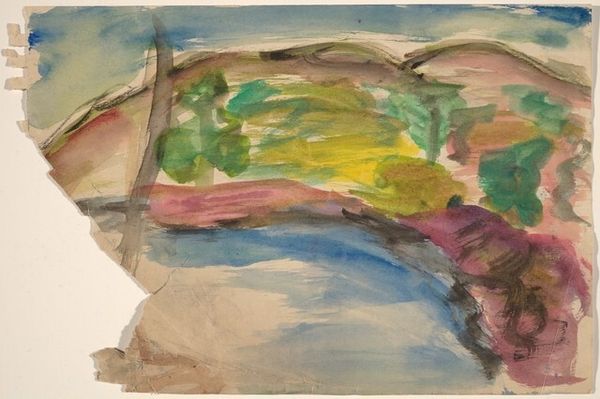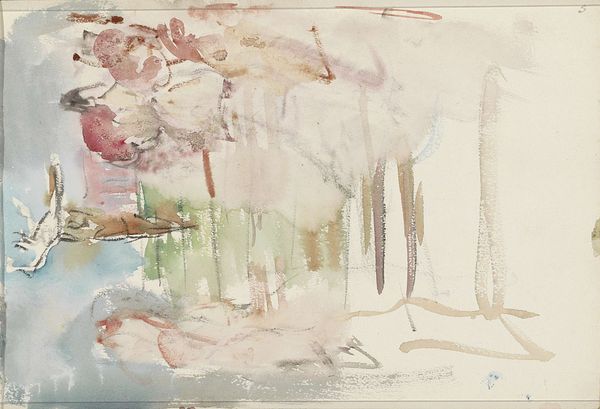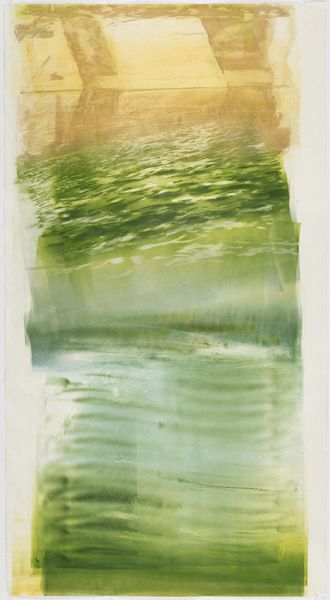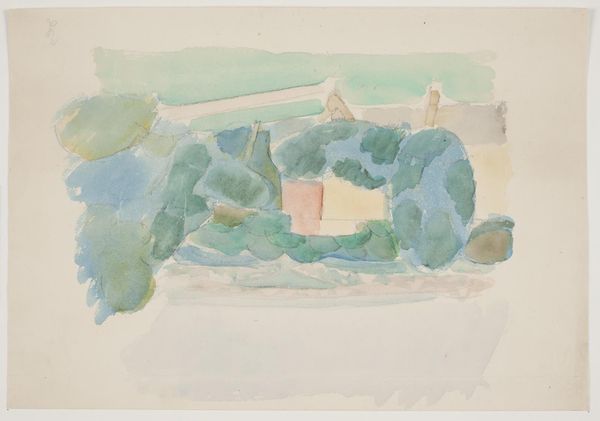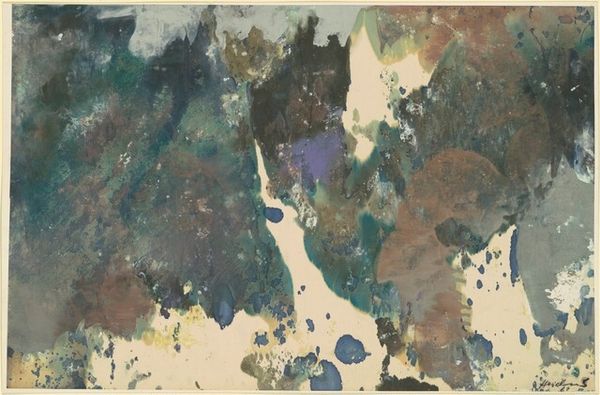
Dimensions: 230 mm (height) x 287 mm (width) (bladmaal)
Editor: This is "Landskab med marker," or "Landscape with Fields," a watercolor drawing by Edvard Weie, dating to the 1930s. The soft, muted colours give it a rather dreamlike quality. How would you interpret a work like this? Curator: Well, let’s consider the context. Weie was a Danish modernist. This piece, made in the 1930s, exists within a period of immense social and political change. Considering the role of landscape painting during that period, was Weie creating an escape? Or something else entirely? Editor: An escape? I hadn’t thought of it that way. It does feel quite removed from the concerns of the time, like a fantasy rather than reality. Curator: Perhaps, but abstraction itself had political implications. Embracing non-representational styles can be seen as a rejection of academic traditions linked to power structures. Think about the public role of art at the time. Was Weie positioning himself outside of those conventions? The limited palette seems intentional. Editor: It's interesting to think of it that way. I assumed the loose style and abstraction were primarily aesthetic choices, focusing on form rather than any societal commentary. Curator: And perhaps they were! But those choices, or seeming lack thereof, happened at a moment where artists felt particularly called upon to align with various ideologies, whether that was nationalism, communism, or something in between. He's consciously engaging or disengaging with something, so where does this leave this type of landscape, and what values does it affirm? Editor: I see. I hadn’t considered how even seemingly apolitical subjects like landscapes could carry such weight. It makes me wonder if the painting was even accepted by critics or viewed by the public at the time. Curator: Exactly! The history of this image continues, informed by when it enters the museum. A modernist landscape painting hanging in a gallery tells yet another story. Editor: This has definitely made me rethink the piece and its place in history! I appreciate that you illuminated the art's function within its period of production.
Comments
No comments
Be the first to comment and join the conversation on the ultimate creative platform.
